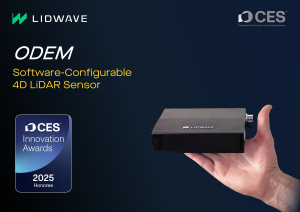ISSCC 2025 will be held February 16-20, 2025 in San Francisco. The program includes papers and talks of interest to the image sensors community. There will be 6 imager papers in the technical session as well as a special forum by invited industry experts on their views on technology trends.
ISSCC Imager session:
6.1 H. Shim et al., Samsung, "A 3-Stacked Hybrid-Shutter CMOS Image Sensor with Switchable 1.2μm-Pitch 50Mpixel Rolling Shutter and 2.4μm-Pitch 12.5Mpixel Global Shutter Modes for Mobile Applications"
6.2 S. Park et al., Ulsan National Institute of Technology, SolidVue, Sungkyunwan Univ., Sognag Univ., "An Asynchronous 160×90 Flash LiDAR Sensor with Dynamic Frame Rates of 5 to 250fps Based on Pixelwise ToF Validation via a Background-Light-Adaptive Threshold"
6.3 H-S. Choi et al., Yonsei Univ., KIST, XO Semiconductor, Myongji Univ, Samsung, " SPAD Flash LiDAR with Chopped Analog Counter for 76m Range and 120klx Background Light"
6.4 T-H. Tsai et al., META, Brillnics, Sesame AI, "A 400×400 3.24μm 117dB-Dynamic-Range 3-Layer Stacked Digital Pixel Sensor"
6.5 T. Kainuma et al., Sony, "A 25.2Mpixel 120frames/s Full-Frame Global-Shutter CMOS Image Sensor with Pixel-Parallel ADC"
6.6 Y. Zhuo et al., Peking Univ, Univ. of Chinese Academy of Sciences, Shanghai Inst. of Technical Physics Chinese Academy of Sciences, "A 320×256 6.9mW 2.2mK-NETD 120.4dB-DR LW-IRFPA with Pixel-Paralleled Light-Driven 20b Current-to-Phase ADC"
Forum "Seeing the Future: Advances in Image and Vision Sensing"
Image sensors are the eyes of modern technology, enabling both humans and machines to perceive and interpret the world. While they are well-known in smartphones and cameras, their role in transformative applications such as autonomous vehicles, IoT devices, and AR/VR is rapidly growing. Advances like deep-trench isolation, 3D integration, and pixel-level innovations have driven the development of 2-layer pixels, miniaturized global shutters, time-of-flight sensing, and event-based detection. Stacked architectures, in particular, enable intelligent onchip processing, making edge computing possible while reducing the device footprints for AR/VR, medical technology, and more. Metamaterials and computational cameras are further pushing boundaries by merging advanced optics with sophisticated algorithms, achieving higher image quality, enhanced depth perception, and entirely new imaging capabilities.
This forum provides engineers with insight into the latest breakthroughs in image sensor technology, edge computing, metaphotonics, and computational imaging— offering an inspiring platform to explore innovations that will shape the future of sensing and drive the next generation of technological advancements.
5.1 F. Domengie, Yole, "Innovative Image Sensors Technologies Expanding Applications and Market Frontiers"
5.2 S. Roh, Samsung, "Dispersion-Engineered Metasurface Integration for Overcoming Pixel Shrink Limitations in CMOS Image Sensors"
5.3 B. Fowler, OMNIVISION, "Advances in Automotive CMOS Image Sensors"
5.4 H.E. Ryu, Seoul National Univ., "Neuromorphic Imaging Sensor: How It Works and Its Applications"
5.5 D. Stoppa, Sony, "Innovation Trends in Depth Sensing and Imaging: Enabling Technologies and Core Building Blocks"
5.6 P. Van Dorpe, imec/KUL, "Photonics Enhanced Imaging for Omics and Medical Imaging"
5.7 C. Liu, META, "AI Sensors for Wearable Devices"
5.8 D. Golanski, STMicrolectronics, "From NIR to SWIR CMOS Image Sensors: Technology Challenges and state-of-the-art"
5.9 F. Heide, Princeton Univ, "Cameras As Nanophotonic Optical Computers"

















